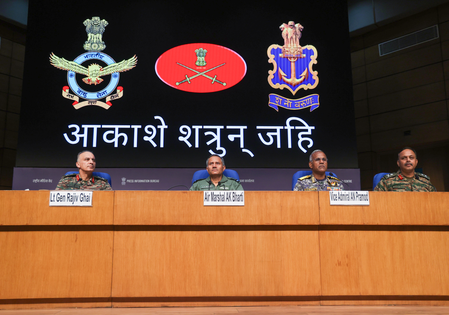New Delhi, May 12: Senior Indian military officials provided a detailed account on Monday of the nation’s robust defense response during and after Operation Sindoor, a decisive action following the recent terror attack in Jammu and Kashmir’s Pahalgam.
At a high-level briefing, Lt Gen Rajiv Ghai, Director General of Military Operations (DGMO), and Vice Admiral A.N. Pramod, Director General of Naval Operations, outlined India’s multi-layered defense strategy. They highlighted how the Indian Army, Air Force, and Navy coordinated to create a defensive posture that was both measured and impenetrable.
Lt Gen Ghai clarified that India did not cross the Line of Control (LoC) or the International Border (IB) during its operations. He emphasized that all defensive actions were carried out within Indian territory, countering speculation of escalation. India’s air defense system successfully thwarted waves of drones launched by the Pakistan Air Force (PAF) between May 9-10, with no PAF drone breaching India’s defenses.
The Army’s integrated counter-drone technologies and shoulder-fired weapons neutralized the aerial threats, with praise directed at the Border Security Force (BSF) for its vigilance and effectiveness.
Vice Admiral Pramod outlined the Navy’s operations, underscoring its persistent surveillance, detection, and target tracking capabilities. India’s Carrier Battle Group, equipped with MiG-29K fighters and airborne early warning aircraft, ensured maritime superiority, with no hostile aircraft approaching the Indian fleet.
The Navy’s anti-missile and anti-aircraft systems reinforced India’s operational dominance, preventing Pakistan’s air and naval forces from retaliating.
Operation Sindoor demonstrated India’s strategic deterrence and defensive resilience, sending a clear message: any future acts of cross-border terrorism will be met with overwhelming force in all domains — land, air, and sea.












